Art Deco Era Jewelry, Part 4: Legacy, Enduring Impact, and the Shift to the Modern Age
Well, here we are at the final chapter of our Art Deco journey! If you've been following along through parts one, two, and three, you've watched this incredible movement bloom from post-war optimism into a full-blown design revolution. But like all good things, the Art Deco era had to come to an end: though not before leaving an indelible mark on jewelry design that we're still feeling today.
So what happened to bring down the curtain on this glittering age? And more importantly, why does Art Deco jewelry still make our hearts skip a beat nearly a century later?
When the Party Ended: The Great Depression Changes Everything
Picture this: it's 1929, and the stock market has just crashed. Suddenly, those elaborate diamond and platinum pieces that defined the Roaring Twenties don't feel quite so appropriate anymore. The Great Depression didn't just change how people spent money: it fundamentally shifted what jewelry meant to society.
During the early 1930s, I've noticed that surviving pieces from this period show a distinct change in tone. The exuberant geometrics became more subdued, and jewelers started working with less expensive materials. Yellow gold made a comeback because platinum was becoming too costly for many clients. The bold, statement-making pieces of the 1920s gave way to smaller, more practical designs that could be worn every day.
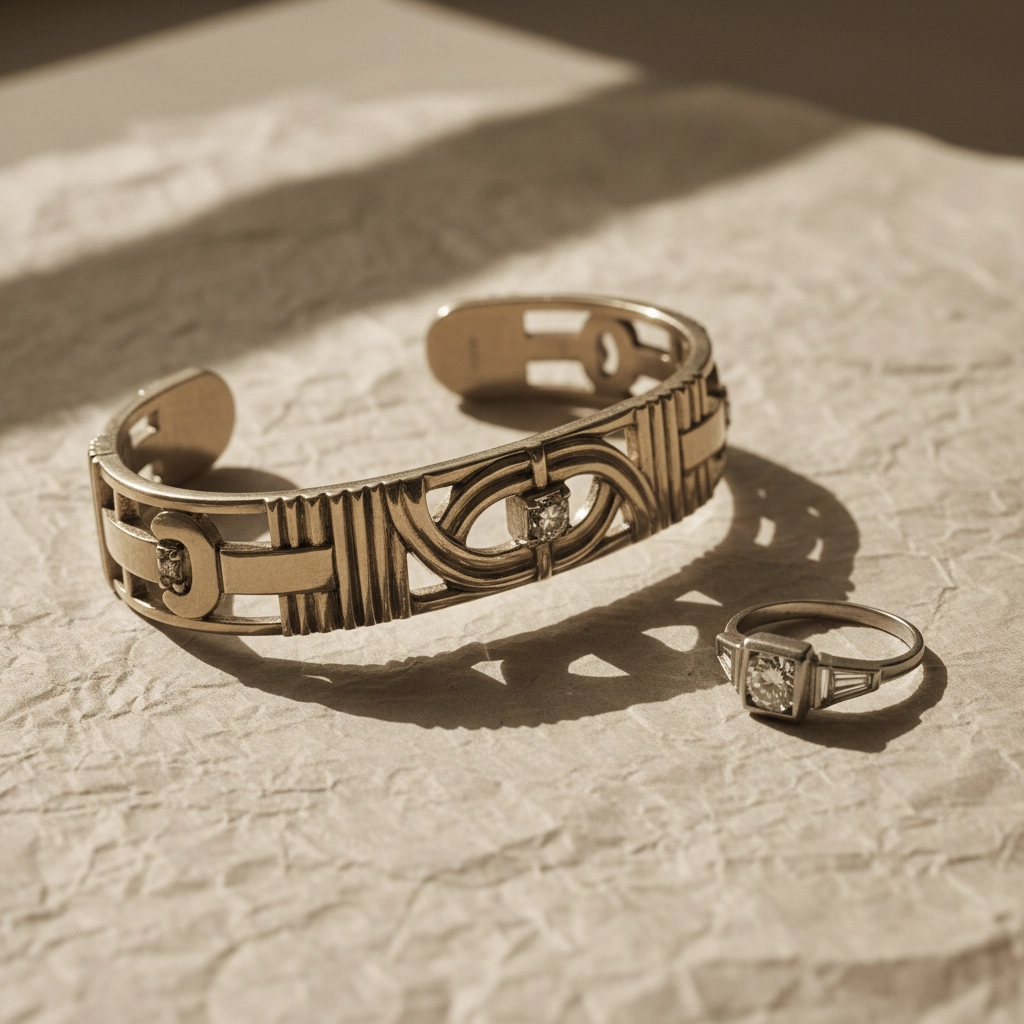
But here's what's fascinating: the geometric design language didn't disappear. It adapted. Jewelers found ways to create that clean, modern Art Deco look using more accessible materials. This democratization of design actually helped spread Art Deco influence even further into mainstream jewelry.
World War II: The Final Curtain
If the Great Depression slowed down Art Deco, World War II brought it to a complete halt. By the late 1930s and early 1940s, the world was focused on very different priorities than luxury jewelry. Materials like platinum were needed for the war effort, and the optimistic, party-ready aesthetic of Art Deco felt completely out of step with global events.
I find it poignant that many of the most beautiful Art Deco pieces from this era were actually repurposed during the war. Families would have their elaborate 1920s jewelry broken down and reset into simpler, more practical pieces. It's a reminder of how jewelry has served as both art and resource during different periods of history.
The war years also saw the rise of what we now call "Retro" style jewelry: larger, more sculptural pieces often made in rose and yellow gold (since platinum was restricted). This style bridged the gap between Art Deco's geometric precision and the more organic forms that would dominate the post-war period.
The Birth of Retro and the Path to Modernism
As we moved into the 1940s, jewelry design underwent another transformation. The Retro period (roughly 1940-1950) kept some of Art Deco's boldness but softened the hard edges. Instead of sharp geometric lines, we started seeing curved forms and more three-dimensional, sculptural designs.
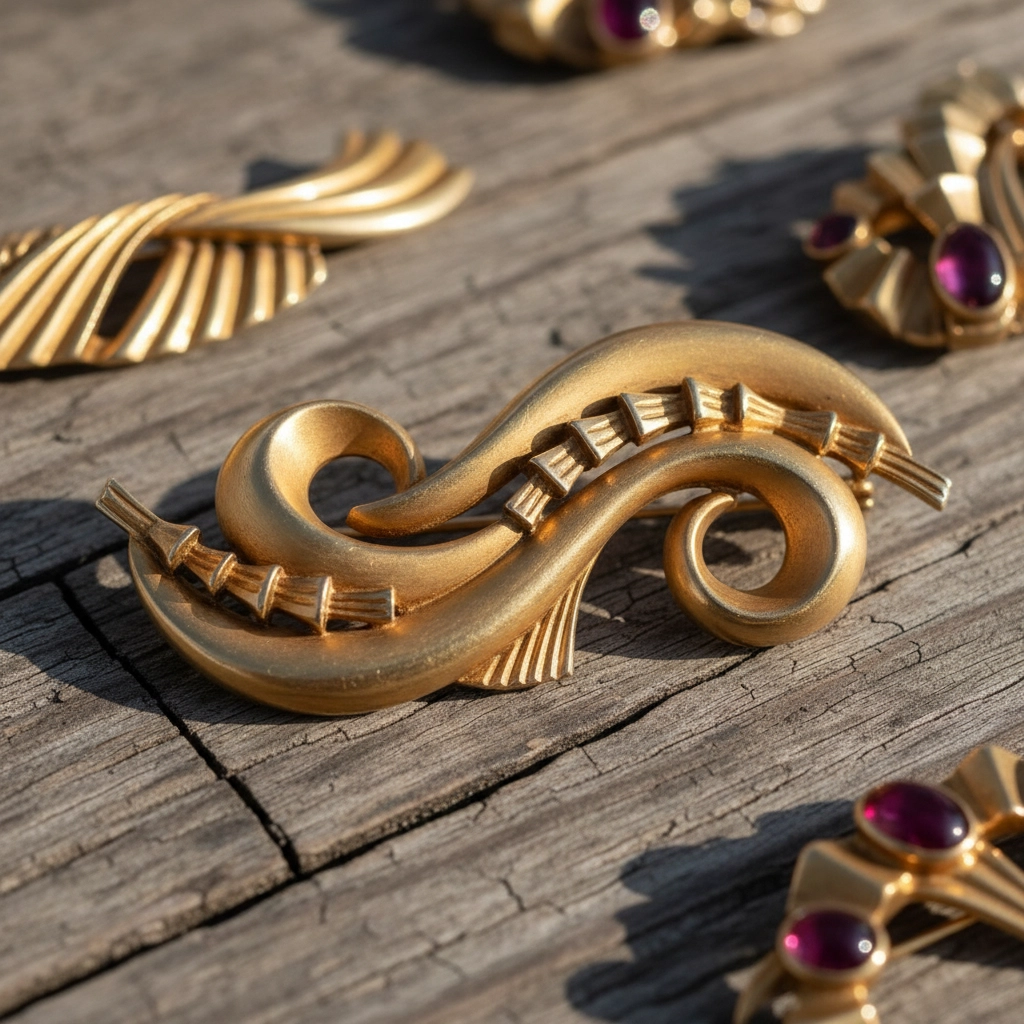
What's interesting is how this transition preserved the essence of what made Art Deco special while adapting to new tastes and circumstances. The emphasis on clean lines remained, but they became flowing rather than angular. The love of large, statement pieces continued, but with warmer metals and often incorporating patriotic motifs during the war years.
By the 1950s, we were firmly in the modern era of jewelry design, with its emphasis on abstract forms and innovative materials. But look closely at mid-century modern jewelry, and you'll still see Art Deco's DNA: that commitment to clean design, geometric inspiration, and the marriage of form and function.
Why Art Deco Never Really Left
Here's something I've observed over years of handling vintage jewelry: Art Deco pieces never go out of style. While other periods come and go in terms of collector interest, Art Deco maintains this consistent appeal that transcends fashion cycles. Why do you think that is?
I believe it's because Art Deco captured something timeless about modern design. Those geometric forms, the bold use of contrast, the emphasis on symmetry: these principles feel just as fresh today as they did in 1925. When you look at a classic Art Deco diamond bracelet, it doesn't feel dated. It feels eternal.
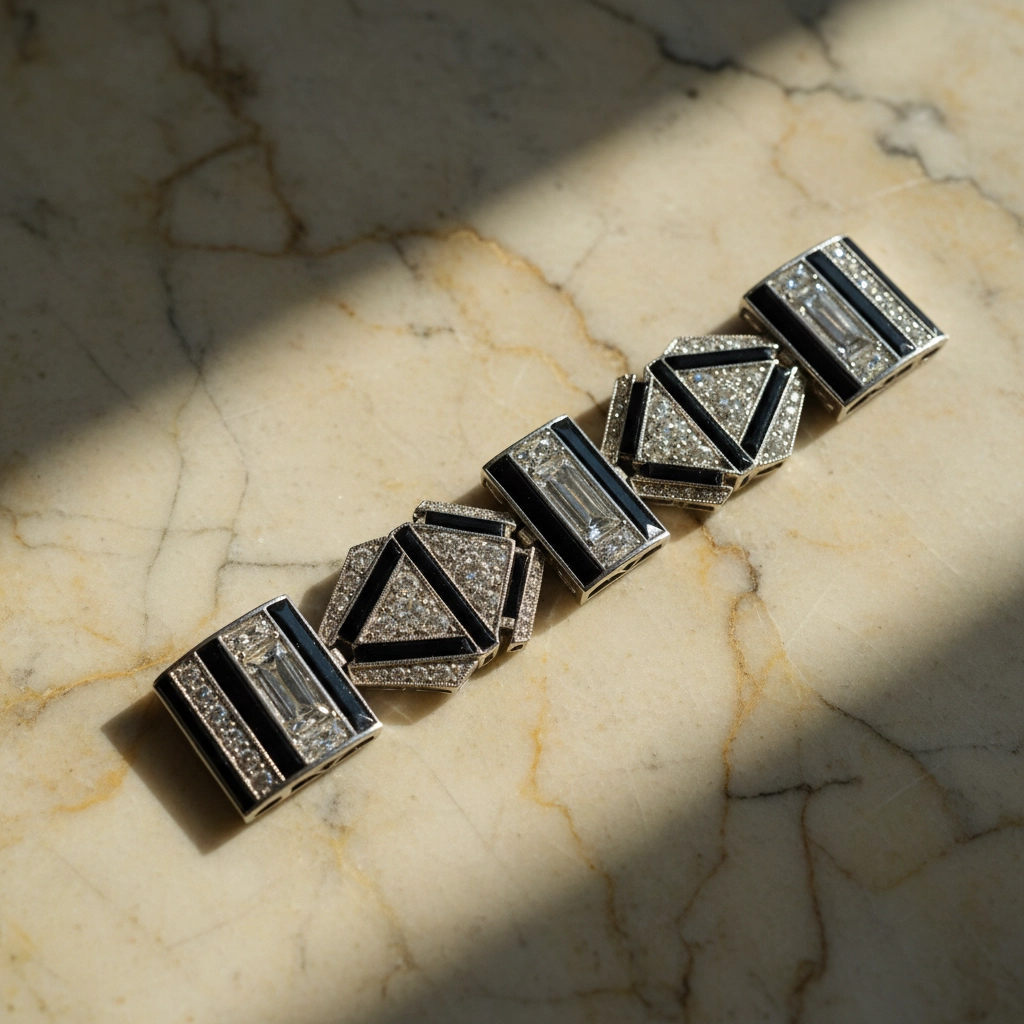
This staying power became especially evident in the 1960s and 70s, when there was a major Art Deco revival. Suddenly, everyone wanted those angular designs and black-and-white contrasts again. Fashion designers like Yves Saint Laurent were directly referencing Art Deco motifs, and jewelry houses started creating new pieces in the Art Deco style.
The Modern Art Deco Renaissance
Fast forward to today, and Art Deco influence is everywhere in contemporary jewelry design. Major houses like Cartier, Van Cleef & Arpels, and Boucheron regularly create collections that pay homage to the movement. In 2021, both Boucheron and Van Cleef & Arpels released significant Art Deco-inspired high jewelry collections to mark the centennial.
But it's not just the big luxury houses. I see Art Deco influence in everything from engagement rings to fashion jewelry. Those clean lines, geometric settings, and bold contrasts have become part of the fundamental vocabulary of modern jewelry design.
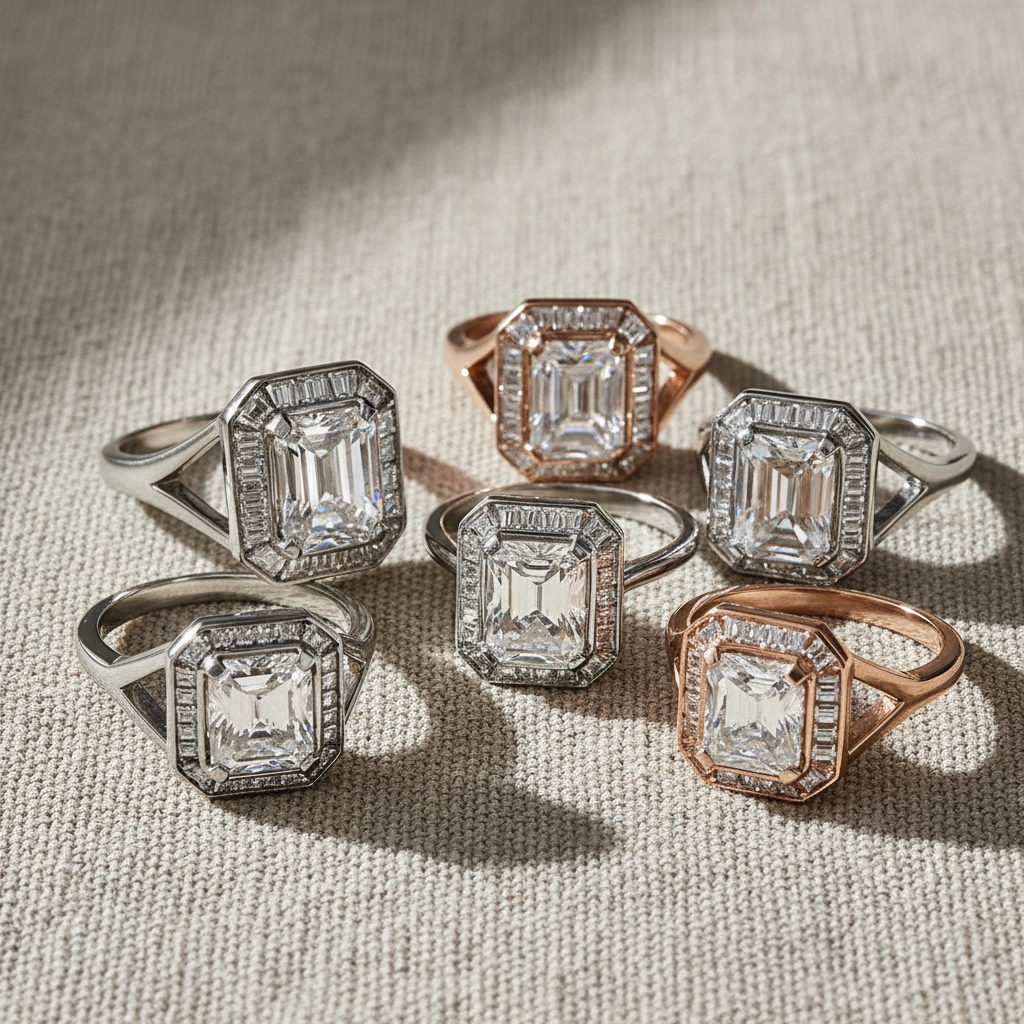
Have you noticed how many engagement rings today feature geometric halos or step-cut stones? That's pure Art Deco influence. Or those statement earrings with angular, architectural forms? Also descended from 1920s design principles. The movement's emphasis on wearable art: jewelry that makes a statement while still being practical: speaks directly to contemporary values.
What We Learned from Art Deco
As I reflect on this incredible period in jewelry history, I'm struck by several lessons that Art Deco taught the design world. First, it proved that geometric forms could be just as beautiful and emotionally resonant as organic ones. Second, it demonstrated how jewelry could reflect the spirit of its time while still maintaining timeless appeal.
Art Deco also showed us the power of cultural synthesis. The movement's incorporation of influences from Egyptian, Asian, African, and Native American cultures created something entirely new while paying respect to diverse traditions. In our globalized world, this approach feels remarkably contemporary.
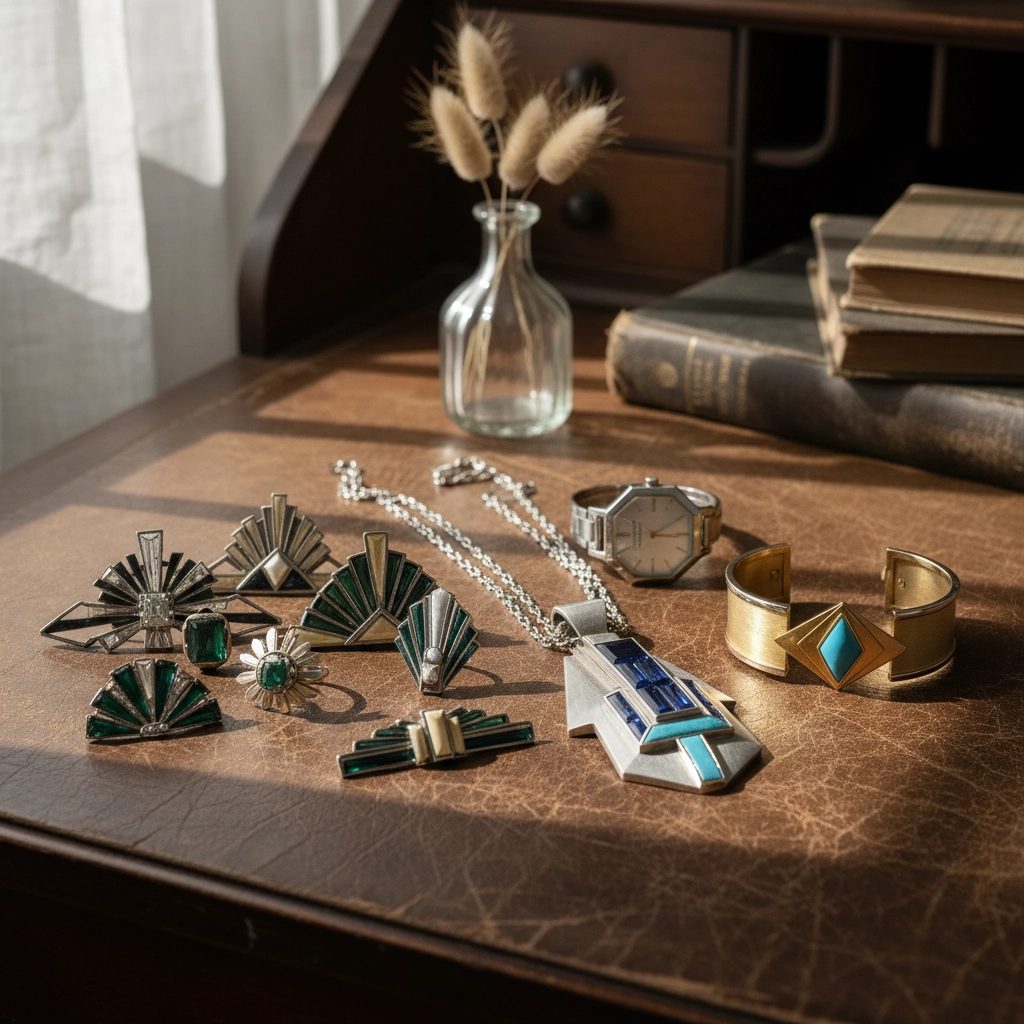
Perhaps most importantly, Art Deco established the idea that luxury doesn't have to be fussy or overly ornate. Sometimes the most powerful statement comes from perfect proportions, clean lines, and impeccable craftsmanship: principles that continue to guide luxury design today.
Wrapping Up Our Art Deco Journey
What a ride it's been! Over these four parts, we've traveled from the post-World War I optimism that birthed Art Deco, through its most iconic motifs and revolutionary techniques, and finally to its lasting legacy that continues to influence jewelry design today.
If you take anything away from this series, I hope it's an appreciation for how Art Deco represented a perfect storm of cultural, technological, and artistic factors that created something truly special. The movement didn't just change how jewelry looked: it changed how we think about jewelry's role in expressing personal style and reflecting the spirit of the times.
The next time you see an Art Deco piece, whether it's an original from the 1920s or a contemporary design inspired by the movement, take a moment to appreciate not just its beauty, but its place in this incredible design legacy. You're looking at more than jewelry: you're seeing a piece of design history that helped shape the modern world.
Thanks for joining me on this journey through one of jewelry's most influential periods. Who knows? Maybe you'll spot some Art Deco influence in a piece you're wearing right now.
Cheers,
Peter